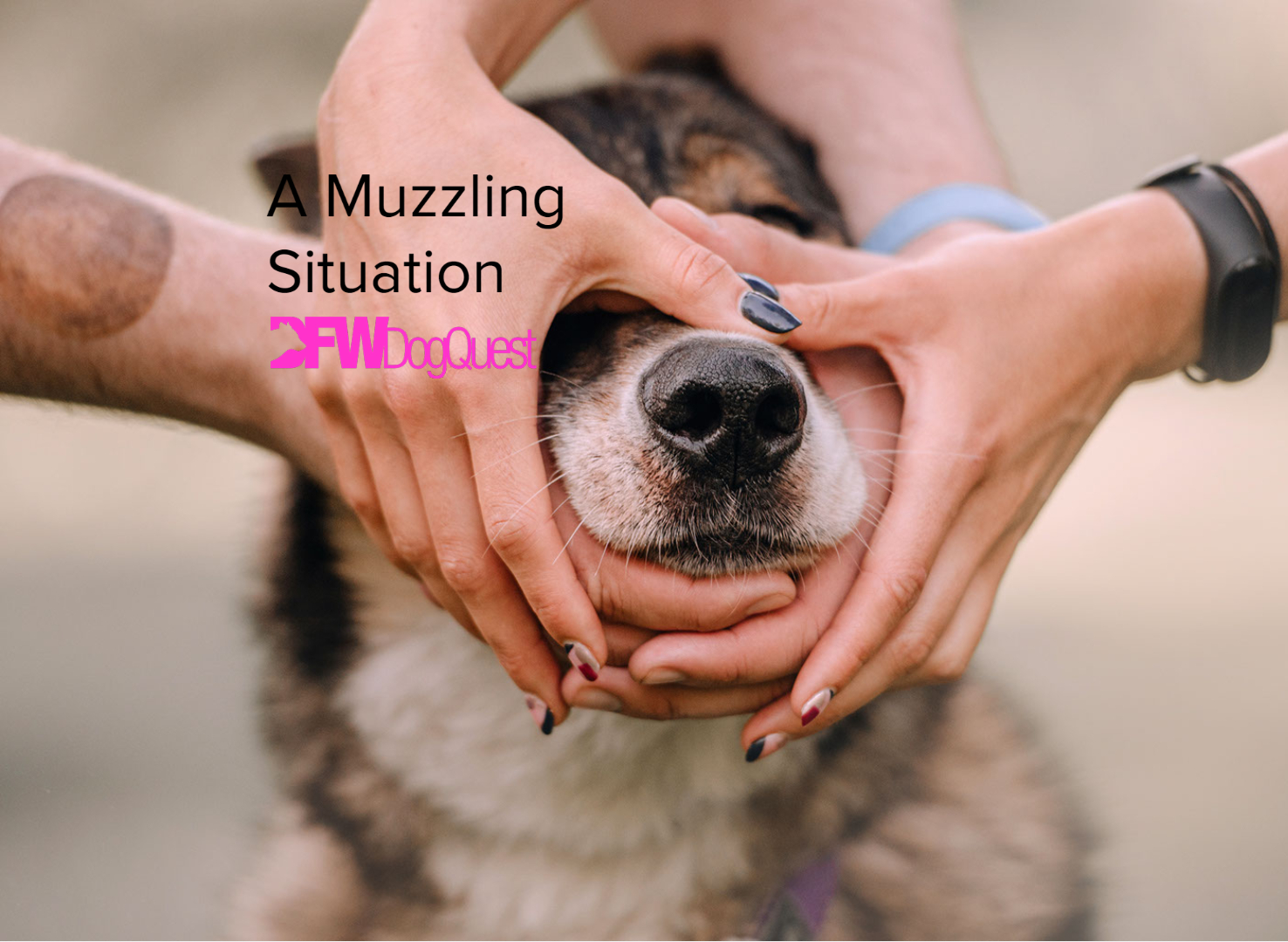MANY PEOPLE ARE FAMILIAR with muzzles as a device for bite prevention, and they tend to have a certain stigma attached to them. A large part of this negative image seems to be due in part to the appearance of a dog wearing a muzzle. Some people are of the opinion that only ‘bad’ dogs need to wear muzzles. This is unfortunate, since, when used correctly, muzzles are very useful tools that can make you and your pet more comfortable.
Muzzles can be used as training tools as well as in situations that may be troublesome or intimidating for your pet.
Which kind do you need?
There are several different types of muzzles available, depending upon your specific needs. There are basket muzzles, which prevent biting and chewing, but still allow your dog to bark and pant. Then there are the more typical snug-fitting muzzles which are made from a variety of materials such as leather, neoprene, or vinyl. In general, these muzzles prevent barking as well as biting and chewing. If the muzzle is sized appropriately, it will still allow your dog to pant a little. Products such as the gentle leader or the haltie are not actually muzzles. As such, they do not prevent biting or barking, but they will give you more control over your dog’s head. This can make your training more effective, especially when introducing your dog to new people, animals, and situations.
Helping anxiety
Every pet has different anxieties and behavioral quirks that make them individuals, but which may also necessitate the use of a muzzle in certain situations. Some dogs require muzzles for trips to the vet or just for specific veterinary procedures such as having blood taken. Other dogs may need to wear a muzzle during a visit to the groomer, or perhaps when encountering new people and animals.
Your veterinarian can help you to assess your pet’s behavioral issues and determine if a muzzle may be beneficial or required at a particular time. Remember that if there is a time when your pet needs a muzzle, it is as much for their safety and comfort as it is for everyone else’s. When used appropriately, muzzles can reduce your pet’s anxiety in problem situations. One option is to use trazodone for dogs.
If the muzzle is selected carefully for your dog’s size and needs, it will not cause your dog harm. However, muzzles should never be used without supervision, and certain muzzles should not be left on for extended periods of time. For instance, while a tighter-fitting muzzle may allow some panting, some dogs can become overheated when they are left on for too long.
If you decide to try a muzzle, look for durable materials and quick-release clasps as well as for a product that is fitted to your dog’s breed and size requirements. You can find muzzles at veterinary clinics and pet stores as well as on the Internet. The price will vary according to the size, material, and type of muzzle. Again, your veterinarian can help you not only in determining if your pet needs a muzzle but also in deciding exactly what type would be appropriate.



